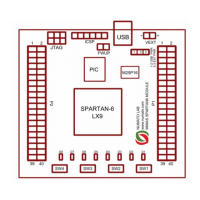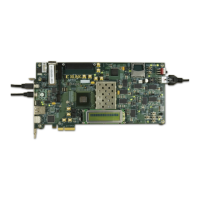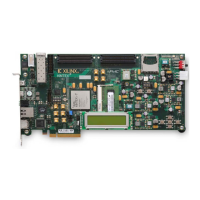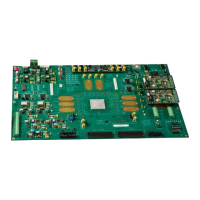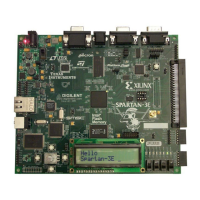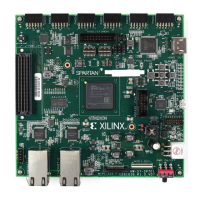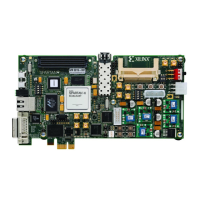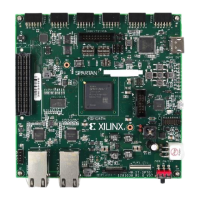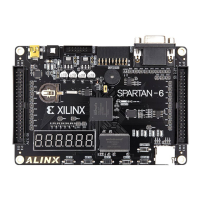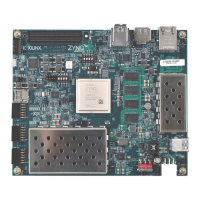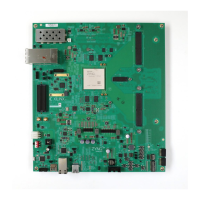Spartan-6 FPGA PCB Design and Pin Planning www.xilinx.com 41
UG393 (v1.1) April 29, 2010
Chapter 4
PCB Materials and Traces
The choice of transmission media, whether PCB materials or cable type, can have a large
impact on system performance. Although any transmission medium is lossy at gigahertz
frequencies, this chapter provides some guidelines on managing signal attenuation so as to
obtain optimal performance for a given application.
How Fast is Fast?
Signal edges contain frequency components called harmonics. Each harmonic is a multiple
of the signal frequency and has significant amplitude up to a frequency determined by
Equation 4-1:
f ≈ 0.35 / T Equation 4-1
Where:
f = Frequency in GHz
T = The smaller of signal rise (T
r
) or fall (T
f
) time in ns
Because dielectric losses in a PCB are frequency dependent, a bandwidth of concern must
be determined to find the total loss of the PCB. Frequencies must start at the operation
frequency and extend to the frequency in Equation 4-1. For example, a 10 Gb/s signal with
a 10 ps rise time has a bandwidth from 10 GHz to 35 GHz.
Dielectric Losses
The amount of signal energy lost into the dielectric is a function of the materials
characteristics. Some parameters used to describe the material include relative permittivity
ε
r
(also known as the dielectric constant) and loss tangent. Skin effect is also a contributor
to energy loss at line speeds in the gigahertz range.
Relative Permittivity
Relative permittivity is a measure of the effect of the dielectric on the capacitance of a
conductor. The higher the relative permittivity, the slower a signal travels on a trace and
the lower the impedance of a given trace geometry. A lower ε
r
is almost always preferred.
Although the relative permittivity varies with frequency in all materials, FR4 exhibits wide
variations in ε
r
with frequency. Because ε
r
affects impedance directly, FR4 traces can have
a spread of impedance values with increasing frequency. While this spread can be
insignificant at 1.125 Gb/s, it can be a concern at 10 Gb/s operation.
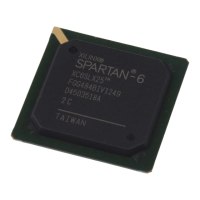
